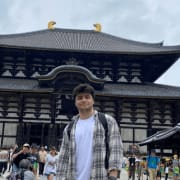What Is a Japanese to English Translator?
Japanese to English translators are professionals who are fluent in both Japanese and English. A translator’s primary responsibilities are to interpret and translate both the written and spoken language from Japanese to English. They are bilingual specialists who provide communication and understanding between two parties.
These translation specialists are typically native speakers of either or both languages, understanding the cultural nuances of each and reflecting them in their translated works.
Why Hire a Freelance Japanese Translator?
There are several reasons to hire a professional translator. Japan has the third-largest economy in the world with expanding opportunities for global businesses. When you are able to work in the Japanese markets, your business can grow and expand to new heights.
However, accurate Japanese to English translations aren’t always possible with electronic translation devices. Japanese is just as (if not more) complicated as English, with different dialects and cultural nuances. An accurate translation can be what either lands you that major client or causes you to lose them.
What sort of projects can you use a translator for? Translators can translate:
-
Ads
-
Letters
-
Business and medical documents
-
Video scripts
-
Websites
-
Articles
You can even hire most translators as writers and even designers for your Japanese branding materials. Let’s explore a few more key reasons you should hire a manual translator rather than opt for a digital device or AI translator:
Japanese Varies and Is Embedded In the Culture
Just like with most languages, Japanese varies from region to region and has many dialects. This can make translating difficult for digital translation devices and result in inaccurate or embarrassing mishaps.
Additionally, Japanese culture is deeply rooted in social protocols and culture, with analogies and expressions that require context. Sometimes, the phrase is meant literally, and other times, there is an implied secondary meaning to the phrase that needs to be addressed in translation.
When you hire a professional translator, the guessing is gone! You can hire freelancers to provide Japanese to English translation during virtual meetings, or writers who can transcribe your ideas and proposals into written documents or written correspondence with your Japanese-speaking counterparts.
There Are Four Styles of Writing In Japan
In addition to being a complicated spoken language, translating Japanese to English in writing requires equal measures of talent and expertise. Writers must be fluent in the four Japanese alphabets:
-
Hiragana: A simplified alphabet first taught to children with forty-six basic characters
-
Katakana: An alphabet developed to notate foreign words
-
Kanji: The most advanced alphabet, using more than 2,000 characters derived from Chinese characters
-
Romaji: A romanized alphabet primarily used to transliterate Japanese
Kanji is the most commonly used alphabet in business, but katakana, hiragana, and romaji may all be used in the same context. Each alphabet is used for specific purposes, which ties back to that cultural nuance. Hiring a Japanese to English translator allows you to get your point across without juggling four alphabets.
The Grammar Structure Is Different From English
If you’re an English speaker, there is nothing wrong with learning Japanese and wanting to exercise your skills with translation! However, in professional settings, it’s better to let a fluent Japanese speaker take the reins. Translators and writers understand the complicated grammar structures in Japanese that vary greatly from English.
For example, Japanese only has two tenses to refer to time: past and non-past, rather than past, present, and future. In Japanese, subjects and verbs are generally placed at the end of a sentence, which is the opposite of English. With a professional translator, you can focus on what you’re saying, not how you’re saying it.
How to Hire Japanese to English Translators
Finding qualified Japanese and English speakers to complete translation tasks used to require contracting a translation agency or overspending on under-developed translation devices. Hiring translation services in-house can be costly and time-consuming, as well.
The best way to hire professional translators is to look through Guru’s wide selection of freelance translators. You’ll find hundreds of English and Japanese speakers and writers who can take your vision and communicate it to new markets and clients.
How Much Do Japanese to English Translators Cost?
In the United States, the majority of translators who are fluent in both English and Japanese charge nearly $29 per hour on the low end. Experienced translators can make over $80,000 per year!
If your organization regularly conducts business with Japanese speakers, you could hire a translator full-time, but this could drain your budget quickly. Full-time, in-house translators may only be available during the hours stipulated in their contracts, require expensive training and onboarding, and benefits in addition to their wages. Freelance translators can be available right when you need them at a fraction of the cost.
At Guru, our freelancers are sourced from around the globe, which means you can receive premium English translations at a fraction of the cost. When you hire a freelance translator, you only pay for what you need.
What to Look For When Hiring English Translators
Credentials are everything when you hire an English-speaking Japanese translator. If you aren’t fluent in one of those languages, it can be difficult to gauge whether the Japanese translation or English translation they’ve provided is accurate.
We recommend asking if they are bilingual and if they have certifications for both languages. There are proficiency tests that can credential English and Japanese speakers that formalize their level of understanding in each language. Look for translators who can tell you their level of credentials.
When hiring Japanese translators, it’s important to ask about the Japanese-Language Proficiency Test (JLPT). There are five levels of proficiency–N1 through N5. N5 is the lowest level of proficiency, and N1 is as close to fluent as you can get. Generally speaking, translators with N2 level are considered to have a ‘business-level’ understanding of Japanese and are hired for most jobs in Japan.
For English translators, you can ask for their Common European Framework of Reference for Languages (CEFR). This is an international guideline to measure language ability on a scale from A1 (beginner) to C2 (language master).













